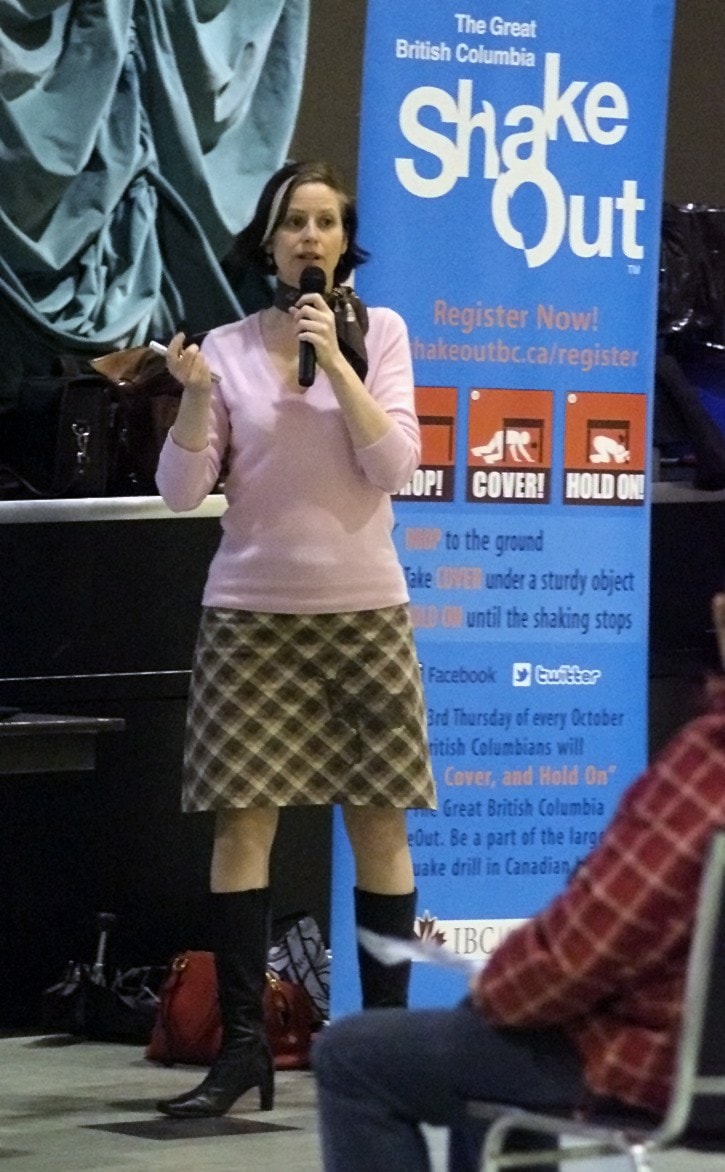While they hope never to have to put their skills to use, emergency planners on the North Island have been busily shoring up plans should the worst happen.
Last week a panel of experts visited Port Hardy and Port McNeill to discuss tsunami and associated hazards at a pair of community forums.
A modest crowd in Port Hardy heard last Friday from National Resources Canada's Alison Bird, Emergency Management BC's Teron Moore and Environment Canada's Anne McCarthy before hearing from local representatives.
Bird, an earthquake seismologist, gave a presentation on the science behind tsunamis, including an appeal to the public to help build data on the subject. She asked that anyone who feels a quake report it on www.earthquakescanada.nrcan.gc.ca. By comparing reports from different areas, she explained, scientist can gain a greater understanding of earthquake effects and more accurately predict results.
Moore discussed the importance of preparedness and McCarthy described the variety of notification tools on offer.
Not all earthquakes cause tsunami and not all tsunami are caused by earthquake, but the panelists did offer general advice:
• Have an emergency kit and plan in place — families should be prepared to be self-sufficient for at least 72 hours following a disaster;
• If you feel an earthquake, drop, cover and hold on — the majority of injuries in an earthquake are caused by falling objects;
• Once shaking stops, survey the area for hazards;
• If in a tsunami zone, leave immediately for high ground;
• In the event of a tsunami, expect several waves over many hours.
While earthquakes are relatively rare, Bird said scientists predict within the next 50 years a 1-in-5 chance of a damaging quake on the North Island.
"If it was a lottery, you's buy a ticket," she said.
Following the presentations, Bob Swain, Emergency Planning Coordinator for the Gwa'sala-'Nakwaxda'xw First Nations spoke about the progress he and his committee have made, including the installation of a tsunami warning system. Swain said that the committee planned to test the system on May 5, putting members in various positions in the community to survey its range.
The audience also heard from Chrissy Johnny who shared a personal recollection of the tsunami of 1964, describing "a black vortex" which rose "almost to our door."
Port Hardy's newly appointed Emergency Coordinator, Mike McCully, introduced himself to the audience and said that his top priority was a revamp of the emergency plan.
McCully said his background experience was related to wildfire management but noted some parallels between the way wildfires and tsunami were handled.
"We're working hard to get a good plan in place," he said, "but, ultimately, people need to get their head around the idea that they need to be prepared to look after themselves."
He reaffirmed that Avalon School is the evacuation muster point for Storey's Beach residents, the Civic Centre is the muster point for Port Hardy, and Wakas Hall is the emergency centre for Tsulquate Reserve.
His final piece of advice was to be extra cautious. "If you're not sure if you should evacuate, evacuate. I'm standing here to ask you to err on the side of caution."
For more information on Port Hardy's Tsunami Preparedness plan, including information sources and evacuation centres, see the District's website at www.porthardy.ca and click the emergency info tab.
